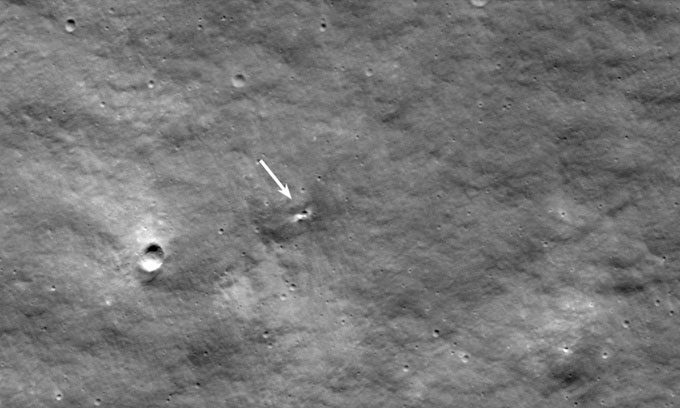The Luna-25 spacecraft was unable to land on the Moon as planned, likely due to the onboard control system failing to shut down the engines in time.
Luna-25, Russia’s first lunar lander launched in nearly 50 years, crashed into the celestial body on August 19. The crash occurred during a trajectory adjustment intended to prepare for a landing attempt near the Moon’s south pole two days later. The Russian space agency Roscosmos reported a preliminary cause shortly after the incident: The Luna-25 engines fired for 127 seconds instead of the planned 84 seconds.

The Lunar Reconnaissance Orbiter captured a crater that may have been created by the crash of Russia’s Luna-25 on August 19. (Photo: NASA’s Goddard Space Flight Center/Arizona State University)
Currently, experts are suggesting a detailed cause that could have led to the failure: the onboard control system failed to shut down the engines because it did not receive necessary data from one of the accelerometers (devices used to detect and measure motion).
“The accelerometer did not function, possibly due to the input of a data sequence containing commands with varying execution priorities. This prevented the recording of the moment when the required speed was achieved and timely shut down the spacecraft’s propulsion system,” Roscosmos stated on Telegram on October 3.
The Luna-25 was designed to restart Russia’s lunar exploration program, and this failure will not change that vision, according to experts at Roscosmos and Russian President Vladimir Putin. Russia aims to launch three more spacecraft – Luna 26, 27, and 28 – in 2027, 2028, and 2030 or later. However, the schedule may be accelerated following the Luna-25 failure, as Roscosmos director Yuri Borisov mentioned at the International Astronautical Congress 2023 held in Azerbaijan from October 2 to 6.
Luna-25 aimed to become the first spacecraft to land in the Moon’s south pole region, believed to contain significant water ice. However, the crash on August 19 forced it to relinquish this title to India’s Chandrayaan-3. Chandrayaan-3 successfully landed its lander Vikram and rover Pragyan near the south pole on August 23, just four days after the Luna-25 incident. This success made India the fourth country to successfully land a spacecraft on the Moon, following the Soviet Union, the United States, and China.


















































